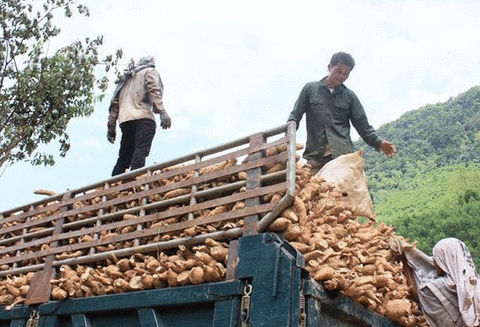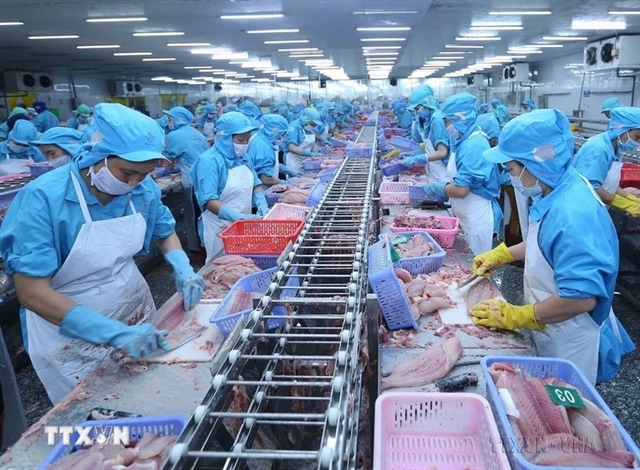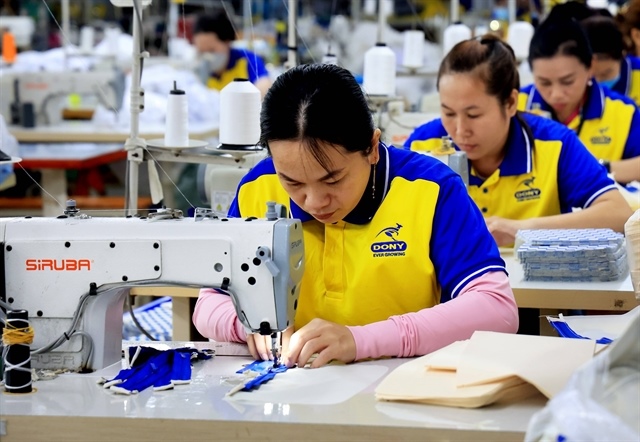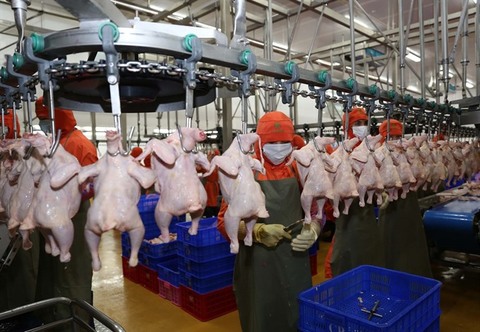Cassava struggles to reach export goal
Cassava struggles to reach export goal
Cassava is one of Viet Nam’s billion-dollar export products. But the starchy root’s dependence on a single export market as well as shrinking production supply areas have challenged the industry’s ambitious goal of reaching US$2 billion worth of exports by 2023.

Viet Nam’s exports of cassava and cassava-made products rank second worldwide, following Thailand, according to the Viet Nam Cassava Association (VCA).
The export value of cassava from 2013 to date has reached $1-$1.35 billion per year, ranking fourth in Viet Nam’s agro-exports after rice, coffee and cashew.
China is the main export market, consuming nearly 90 per cent of Viet Nam’s cassava exports. Shipments to Japan, South Korea, Malaysia and Taiwan have risen in recent years but still made up a modest share of the total.
However, exports to China are declining.
Viet Nam exported 1.47 million tonnes of cassava and cassava-made products, worth $543 million, in the first six months of this year, down 27.2 per cent in volume but up 8 per cent in value compared to the same period of last year.
The amount of products shipped to China dropped 27.4 per cent in volume, reaching over 1.3 million tonnes in the first half, fetching the country $476.6 million, data from the General Department of Customs showed.
According to the Import-Export Department under the Ministry of Industry and Trade, demand from China is weakening due to a temporary halt in production of Chinese factories after environmental checks. In addition, rising concerns over China-US trade tension also affected their buy orders.
Chinese customs data showed China imported 3.26 million tonnes of cassava worth $758.7 million in the first half, down 23.7 per cent in volume but up 2.4 per cent in value compared to the same period of last year.
Demand from China is expected to rise in the coming months after the hot season, but not to reach a high level. China has large inventory of maize due to livestock difficulties. This corn may be used for ethanol production.
Chinese companies are considering the use of alternative materials such as corn, rice and vermicelli to produce ethanol as these materials are cheaper.
Lower supply
The VCA has forecast the price of cassava chips will rise in the coming time as 2017-18 cassava production is expected to drop by 50 per cent compared to the previous crop.
Cassava plantations cover 550,000ha nationwide with annual output of 10 million tonnes. The southern province of Tay Ninh is the biggest plantation and output area with an average output of 32.84 tonnes per year.
According to Vu Duc Trong, director of Tay Ninh’s Department of Agricultural and Rural Development, cassava production area in the province reached 61,636ha in 2016 but is expected to decrease to about 40,000 this year as a result of serious diseases.
Despite having imported millions of tonnes of fresh cassava from Cambodia each year, the severe disease in Cambodia drove down imports this year. Therefore, 68 cassava starch factories in the province are operating at about 50 per cent capacity, Trong said at the conference on the cassava sector on Wednesday.
There are currently about 150 cassava starch factories nationwide, 73 per cent of which operate on an industrial scale. Most cassava buyers plan to use it for bio-fuel production.
Cassava exports are expected to reach 150,000 tonnes worth $72 million in July, lifting the seven-month figures to 1.62 million tonnes with export value of $615 million, down 28.6 per cent in volume and up 8.8 per cent in value against 2017.




















